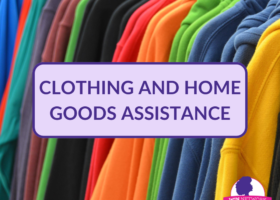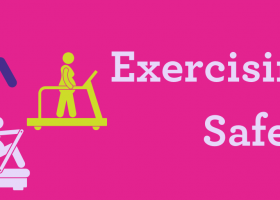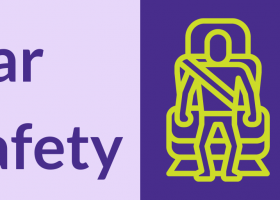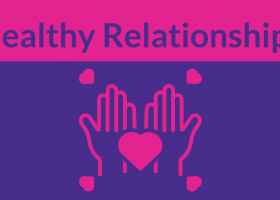Child Safety Guide

In this Article:
- Safe Sleep for Infants
- Infant and Child CPR
- Child Proofing Your House
- Testing for Lead
- Setting Up a Safe Sleep Space
Safe Sleep for Infants
Having your baby sleep on their back, alone in a crib is the safest possible way for him or her to sleep. It will help prevent SIDS (sudden infant death syndrome).
You do whatever you can to make sure your baby has everything they need, putting them to sleep safely is one more way you can be a great mom. Accidental suffocation is the leading cause of injury or death for children 1 year old and younger. Make sure where your baby sleeps is clear of soft things that they could suffocate on.
Remember:
- Always place your baby on his back to sleep.
- Your baby should not sleep in an adult bed, on a couch, or on a chair.
- Use a firm mattress, covered by a fitted sheet.
- Nothing but your baby should be in the crib. Keep stuffed animals, baby bumpers, toys, blankets, or pillows away from where your baby sleeps. Nothing should be in the baby’s sleeping area but your baby.
- Do not hang any toys by strings in the crib. You don’t want these to fall and harm your baby. Your baby can get caught in the strings.
- Keep the baby’s room at a comfortable temperature. Do not overdress the baby. They may get too hot.
For more, check out information on crib safety and safe sleep from U.S. Department of Health and Human Services.
Infant and Child CPR
Hopefully you’ll never have to use CPR, but you should know what to do if your infant or child is unresponsive or choking. The first thing to do is to call 911. The American Red Cross has a step by step guide with pictures on how to perform CPR. You may also want to take a class to become certified. Classes are offered both online and in person.
The American Heart Association and The American Red Cross offer Child/Infant CPR classes throughout Detroit.
Child Proofing Your House
Keeping bedrooms safe:
- Keep the crib away from electric cords, drapes and curtain cords. These can get wrapped around your baby’s neck.
- If your baby is crawling, cover any open wall outlets.
Keeping the kitchen safe:
- Turn pot handles toward the back of the stove.
- Use back burners on the stove for cooking.
- Never leave knives or sharp objects anywhere that a child could reach them or where they could fall off a counter. Keep them in a locked drawer or cabinet that your child can’t get into.
- Keep appliances out of reach, and wind up each of their cords.
- Keep hot foods and drinks out of reach.
Making bath time safe:
- Always stay with your child when they are in the bathtub. Children can drown in very little water very quickly.
- Never leave your child alone or with an older child for even a minute. Take your child out of the tub if you have to answer the phone or doorbell.
- Always test the water before putting your child in the tub. Young children burn easily if the water is too hot.
- Unplug and keep all electrical items away from the water. They can cause an electric shock if they fall in the water while plugged in.
Resource:
- Injury Free Coalition for Kids: This organization offers information on a number of child safety topics including bike, fire and burn, gun, and pedestrian safety.
Testing for Lead
Lead in your home can cause serious health problems for your children. It is especially dangerous for children under the age of 6. Lead can get into their bodies when children put their fingers, toys, or paint chips in their mouths. Lead is also dangerous for pregnant women because it can harm their growing baby.
Ask your local health department about having your home tested for lead.
Think about testing for lead if you have young children and if:
- Your house was built before 1978.
- Your house is near a freeway or busy road where leaded gasoline and its exhaust may have got into the soil.
Where should I test for lead?
Test areas where your children spends the most time. You can test both the paint and soil.
- Bedrooms
- Playrooms
- Kitchens
- Yards where kids play
- Test these areas if there is bare soil or if paint is peeling or chipping.
If you’re worried that your child might have lead poisoning, talk with your doctor. Many other health problems can have the same symptoms as lead poisoning. Your doctor may suggest a blood test that will tell you if your child has lead poisoning.
Setting up a Safe Sleep Space
There’s a lot to get ready before the baby arrives. With your new baby, safety always comes first. From the crib to your baby’s room, here are a few tips on how to keep your baby safe.
Tips for making your baby’s sleep space safe and comfortable.
- Avoid windows and cords. Place the crib away from all windows, blinds, drapes, or cords. Your baby can get caught and possibly strangled in any of these window covers. You also want to be sure that he or she cannot fall out the window.
- Check nuts and bolts. Double check that all nuts and bolts or any other hardware are securely fastened on and around the crib. Inspect these items often, and tighten them when necessary. Any furniture should be sturdy.
- Empty Crib. There should be nothing in the crib besides your baby. This means do not put any toys, bumper pads, blankets, pillows, stuffed animals, or anything else that can cover the baby’s face. It may suffocate the baby or lead to SIDS.
- Don’t overheat. Make sure your baby does not get too hot. If it’s chilly, dress your baby in a sleeper instead of covering them in a blanket. A sleeper is a large fleece onesie to keep them warm.
- No strings. Do not hang any toys by strings into the crib. You don’t want these to fall and harm your baby or for your baby to get caught in the strings.
- Keep away smoke. Don’t allow any smoke around your baby. Secondhand smoke, or the smoke exhaled out from a smoker, can make your baby very sick. It can put your baby at risk for breathing problems, ear infections, pneumonia, or SIDS.
- Your baby should sleep alone. When your baby arrives, he or she should always sleep alone in the crib and on their back.
- Keep your baby close. For the first 6 months, you should be within arms’ reach of your baby.
Your Baby’s Crib
One of the most important items is a baby crib. Babies sleep a lot, and can be in their crib until 2-3 years old. Take your time finding the right crib for your baby.
Look for a crib that is JPMA (Juvenile Products Manufacturers Association) certified. This means that the product meets current safety standards. Always check the US Consumer Product Safety Commission’s (CPSC) website to make sure that it has not been recalled.
What to look for when buying a crib:
- Narrow spaces.
Spacing between the bars of the crib should not be wider than a pop can (about 2 3/8”). You don’t want your baby’s head to get stuck or have your baby fall through.
- Sturdiness.
Test to see if the crib is stable and sturdy, especially the support underneath the mattress. Give it a firm shake. If it seems wobbly, move on to another one.
- Mattress height.
Look for a crib with adjustable mattress height. This will make it easier to reach your baby when they are still small. Continue to lower the height as your baby grows. This will keep them safe when they want to start climbing and moving a lot more.
- Fixed side rails.
Side rails should be permanent and fixed in place. Adjustable side rails are dangerous for your baby. The sale of cribs with movable side rails is banned.
- Firm mattress.
Test the mattress yourself. It needs to be the firmest one that you can find. A soft mattress may lead to an accidental death.
- Snug fit.
When you fit the mattress in the crib, it should be snug. If the space between the mattress and the crib is wider than 2 fingers, you need a bigger mattress. Your baby could slip and fall in between these spaces. A fitted sheet should also be pulled tight over the mattress.
- Recently made.
Find a crib that was made no later than June 2011. These cribs meet current safety standards. A crib that’s been passed down in your family will not follow these guidelines. As a rule of thumb, try not to use a crib that is more than 10 years old.
- Pack n’ Play.
If you and your baby will often be on the move, you should look into getting a Pack n’ Play, instead of a crib. They are cheaper, lighter, and a bit smaller than a full size crib. Follow the same standards as you would if you were buying a crib.
When looking for a crib, take along this handy guide from Baby Center.
Local Resource:
- Michigan Lead Safe: This resource from the MI Dept. of Community Health offers a variety of resources if you have issues with lead.




